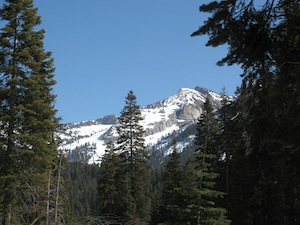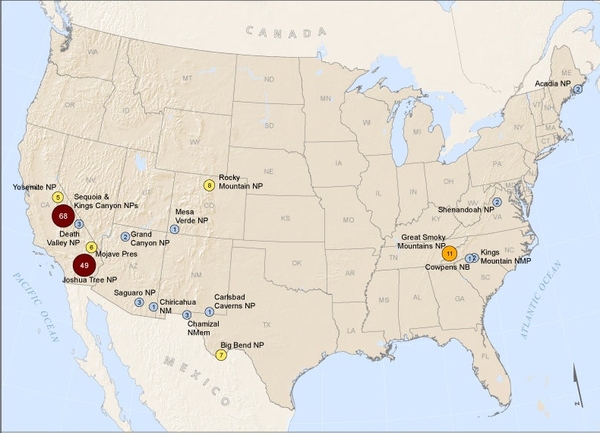It’s not just California cities with lousy air
This was posted originally by our content partners at California Watch, one day after a new report cited several Golden State cities as having with the nation’s worst air quality.
Air pollution in national parks is at a three-year high, and two California parks have recorded the worst readings, according to a report by the National Parks Conservation Association.

Sequoia and Kings Canyon national parks, located next to each other, exceeded the Environmental Protection Agency standard for ozone pollution 68 days so far this year, the most of any of the national parks that monitor air quality. Joshua Tree National Park came in second, with 49 days above the EPA standard.
These readings are not only high among national parks, but also for the state as a whole. According to data maintained by the California Air Resources Board for 2010, the number of days exceeding the ozone standard at Sequoia and Kings Canyon national parks was equal to that of readings in Arvin, just outside of Bakersfield. Last year, both stations recorded 66 days above the ozone standard.
While high by today’s standards, the rates are lower than they were in the late 1980s, when some areas of the state logged 100 or more days with ozone above acceptable levels, according to Air Resources Board data.
“Breathing ozone, a primary component of smog, can trigger a variety of health problems, including chest pain, coughing, throat irritation and congestion,” according to the EPA.
The Air Resources Division of the National Park Service says it has air monitoring systems set up in almost 70 national parks around the country and works with other monitoring networks to gauge the air quality of the nation’s parks.
According to the park service, Yosemite, Sequoia and Kings Canyon national parks “experience some of the worst air pollution of any national parks in the U.S.,” since they are “downwind of many air pollution sources, including agriculture, industry, major highways, and urban pollutants from as far away as the San Francisco Bay Area.”
Although far out in the eastern desert, Joshua Tree “is affected by air pollution generated in the Los Angeles air basin that moves inland with the predominant westerly winds,” according to the park service.

The National Parks Conservation Association report called attention to two legislative measures moving through Congress that would weaken the EPA’s air quality regulations.
“National park visitors should not have to worry about having an asthma attack while hiking in American treasures like the Grand Canyon and Great Smoky Mountains National Parks,” Mark Wenzler, the association’s vice president for climate and air quality programs, stated in the report.
